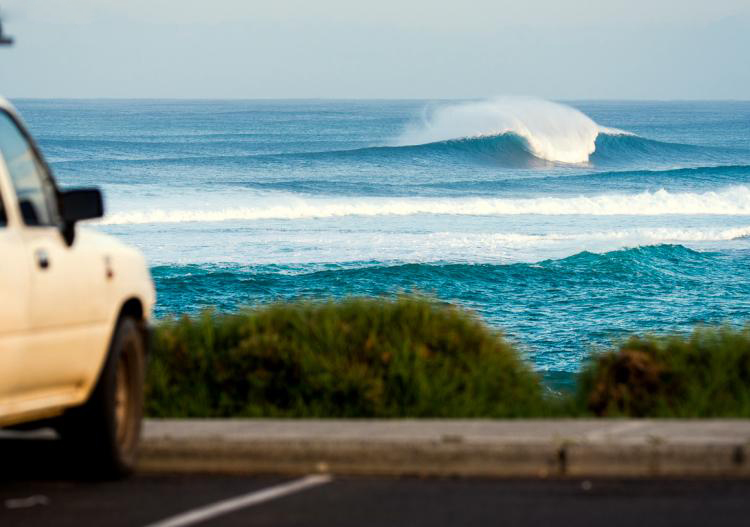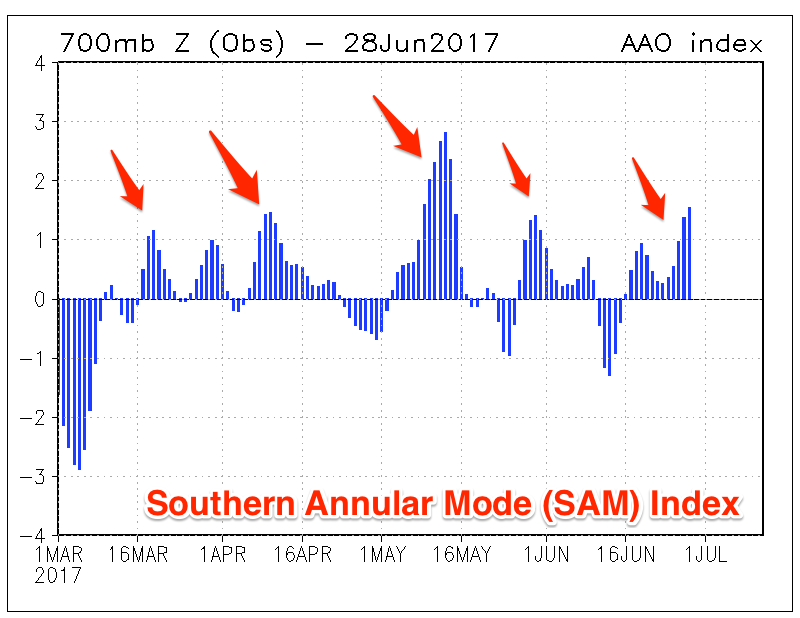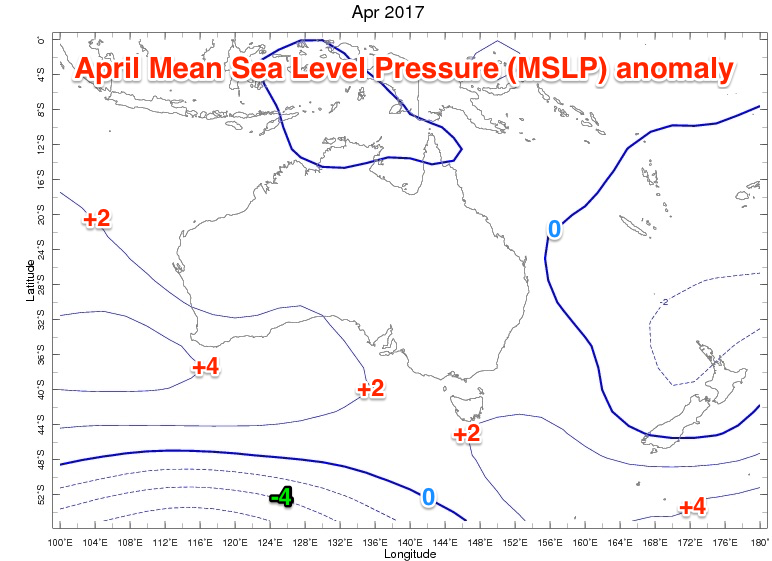Western and South Australia's stellar run of swell
 Western Australia and in particular the Margaret River region have just come off an excellent run of clean surf, with months of offshores and consecutive large swell events. The great conditions began around the time of the Margaret River Pro and have persisted since, seldom letting up.
Western Australia and in particular the Margaret River region have just come off an excellent run of clean surf, with months of offshores and consecutive large swell events. The great conditions began around the time of the Margaret River Pro and have persisted since, seldom letting up.
Local southwest photographer Mick Gullan shares the current sentiments "Winter is so different over here this year. I think everyone is loving it whether they are down south or up north!"
And while the southern states usually receive lots of swell during autumn and winter, persistent offshore winds and fine weather are far more rare. And it's this, an abundance of swell and great conditions that have been the outlier.
Similar conditions have been seen across South Australia and Victoria and while it's a blessing for surfers, farmers are cursing the fine weather with most locations seeing well below average rainfall for this time of year.

(Photo above and top by Peter Jovic)
So what's behind this amazing run of waves?
Two words: High pressure.
Over the last few months we've seen a persistent positive SAM event. The Southern Annular Mode (SAM) is an index showing how far north or south the polar westerlies (storm track) is from normal.
When SAM is positive the polar westerlies shift further south away from us, closer to Antarctica which in turn results in higher pressure across Australian latitudes.
The opposite occurs with a negative SAM event with the polar westerlies shifting further north and closer to Australia.

You can see in the above chart that the SAM has been generally positive since mid-March, becoming quite strong through the first half of May.
As talked about in an article we published last week, the Bureau of Meteorology notes that parts of Australia have seen average pressure readings of 1039hPa for the start of winter, way above the average of 1013 for this time of year, and are labelling it a one-in-ten-year event.
A great visualisation of the higher than normal pressure across the country is shown below, with this map showing the difference in pressure through April compared to the climatic mean. What we can see across Western and Southern Australia is that the pressure was 2-4hPa above the long term average for April.

When the highs are positioned in such a way across the southern part of the country, offshore winds dominate, while the Southern Ocean storms continue to roar, combining to create large clean pumping swells. In short, we get the southwest swells but not the southwesterly winds.
We're still in a positive SAM event and forecasts are for it to remain positive into early July, but this won't prevent a couple of strong polar fronts breaking through and impacting Western and Southern Australia along with Victoria over the coming fortnight, bringing true wintery conditions.


Comments
Is it possible for you to forecast SAM "s in advance for the entire seasons ? i.e winter, spring, autumn ?
Could be a very handy card to have up one's sleeve in certain areas.
Unfortunately not sorry Lankey Dean.
This is the best there is.. 7/10/14 day forecasts AAO/SAM Forecast
So if the forecast for the next 14 days is for positive SAM why then do you say above Craig that south west oz is about to get smashed with cold fronts in the coming weeks?
I was wondering about this as well, but as the SAM/AAO accounts for the whole Southern Hemisphere, you can see at the same time the high pressure across the rest of the hemisphere..
Also there's a little more info here: Marshall Southern Annular Mode (SAM) Index (Station-based)
So this shows that even knowing the SAM will be -/+ in two weeks time, it could still stray away from the general pattern in certain regions.
Interesting article! A recent study that was published in Climate Dynamics talks about the relationship between the SAM and the southwestern Australian wave climate in much (scientific) detail. The authors of the study use regional indices of the SAM and the subtropical high pressure ridge and investigate the response of the wave climate to shifts in the pressure systems. It explains why positive/negative SAM index does not necessarily equate to large/small waves in WA even though the waves are influenced by the SAM (partially because the SAM index is for the entire Southern Ocean and partially because of the way how the SAM index is calculated).
Here's the link to the study if anyone is interested -
https://link.springer.com/article/10.1007/s00382-017-3704-z
Nice! Yeah that's what I have figured.
"The Southern Annular Mode (SAM), also known as the Antarctic Oscillation (AAO), describes the north–south movement of the westerly wind belt that circles Antarctica, dominating the middle to higher latitudes of the southern hemisphere.
The changing position of the westerly wind belt influences the strength and position of cold fronts and mid-latitude storm systems, and is an important driver of rainfall variability in southern Australia.
In a positive SAM event, the belt of strong westerly winds contracts towards Antarctica. This results in weaker than normal westerly winds and higher pressures over southern Australia, restricting the penetration of cold fronts inland.
Conversely, a negative SAM event reflects an expansion of the belt of strong westerly winds towards the equator. This shift in the westerly winds results in more (or stronger) storms and low pressure systems over southern Australia. During autumn and winter, a positive SAM value can mean cold fronts and storms are farther south, and hence southern Australia generally misses out on rainfall. However, in spring and summer, a strong positive SAM can mean that southern Australia is influenced by the northern half of high pressure systems, and hence there are more easterly winds bringing moist air from the Tasman Sea. This increased moisture can turn to rain as the winds hit the coast and the Great Dividing Range.
In recent years, a high positive SAM has dominated during autumn–winter, and has been a significant contributor to the 'big dry' observed in southern Australia from 1997 to 2010." Quote
http://www.bom.gov.au/climate/enso/history/ln-2010-12/SAM-what.shtml
Craig that is very informative thanks for the report.
Thanks Craig. Can you touch on the relationship between +/- SAM and nodes of the LWT?
There isn't any unfortunately that i'm aware of.
But the LWT nodes would be able to positioned further north with a - (negative) SAM.
For us Perth locked poor bastards the +ve SAM is a killer. No fronts smashing the banks so the good conditions get wasted with straighthanders till the cows come home. Give us a break SAM. Hopefully the weather tonight/tomorrow will mix them up a little.
In stark contrast to last year, we've got a strong negative SAM event at the moment and the Sandgropers will be able to tell you all about it.
We're now seeing more mid-latitude storms pushing further north, up and over southern and central Western Australia.
Hi Craig, does this mean August and early September is likely to see a continuation of westerly fronts and winds across west coast SA?
AAO forecasts are a little hard to read, but it looks like it will remain negative through until the middle at least of the month..
Safe to say I have no idea what I'm looking at on that chart there Craig
Oh sorry, bascially it looks like the fronts/mid-latitude systems will continue through until the middle of the month.
"Safe to say I have no idea what I'm looking at on that chart there Craig."
Ha ha
Craig, I would have thought that if there is a negative SAM event that the high pressure systems that have set up over Eastern Australia would also start to break down and would start to see the mid latitude fronts make it across to NSW. No sign of that on the normal weather forecasts which appear to remain dominated by high pressure?
There hasn't been a blocking setup as such, if so we'd be seeing constant northerly winds across Qld and Northern NSW.
We've been seeing mid-latitude systems pushing across the Tasman, but these don't bring swell. They bring westerlies and zonal cold fronts with refracted southerly swell pulses as have been seen the last few weeks.
"In stark contrast to last year, we've got a strong negative SAM event at the moment and the Sandgropers will be able to tell you all about it.
We're now seeing more mid-latitude storms pushing further north, up and over southern and central Western Australia."
"AAO forecasts are a little hard to read, but it looks like it will remain negative through until the middle at least of the month"
"Basically it looks like the fronts/mid-latitude systems will continue through until the middle of the month."
"We've been seeing mid-latitude systems pushing across the Tasman, but these don't bring swell. They bring westerlies and zonal cold fronts with refracted southerly swell pulses as have been seen the last few weeks." - Craig
Thanks Craig , What else has caused the consecutive mega swells for west oz & indo ? How is the Indian Ocean dipole looking , what mode is that in ?